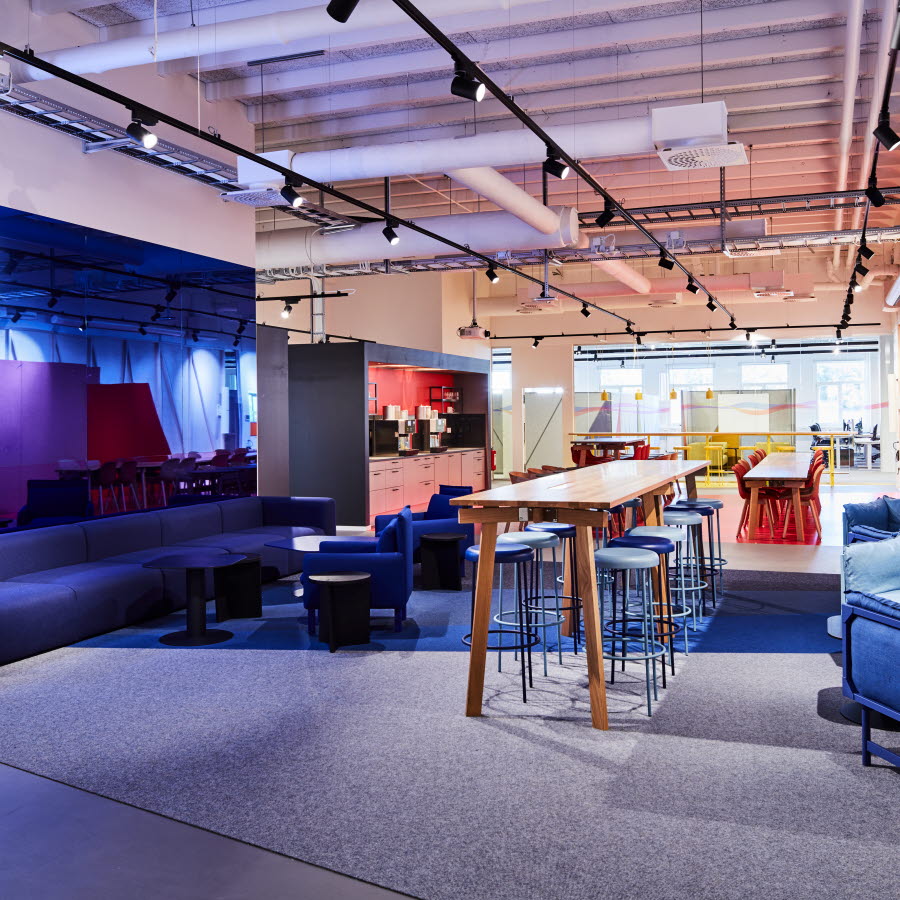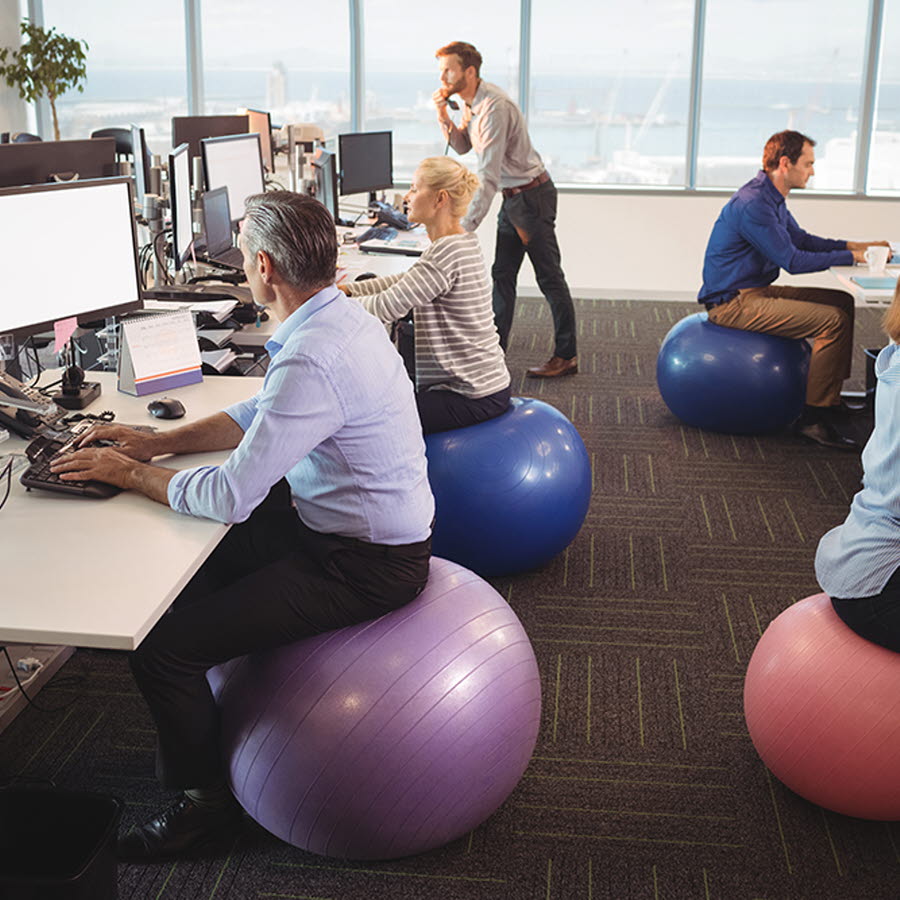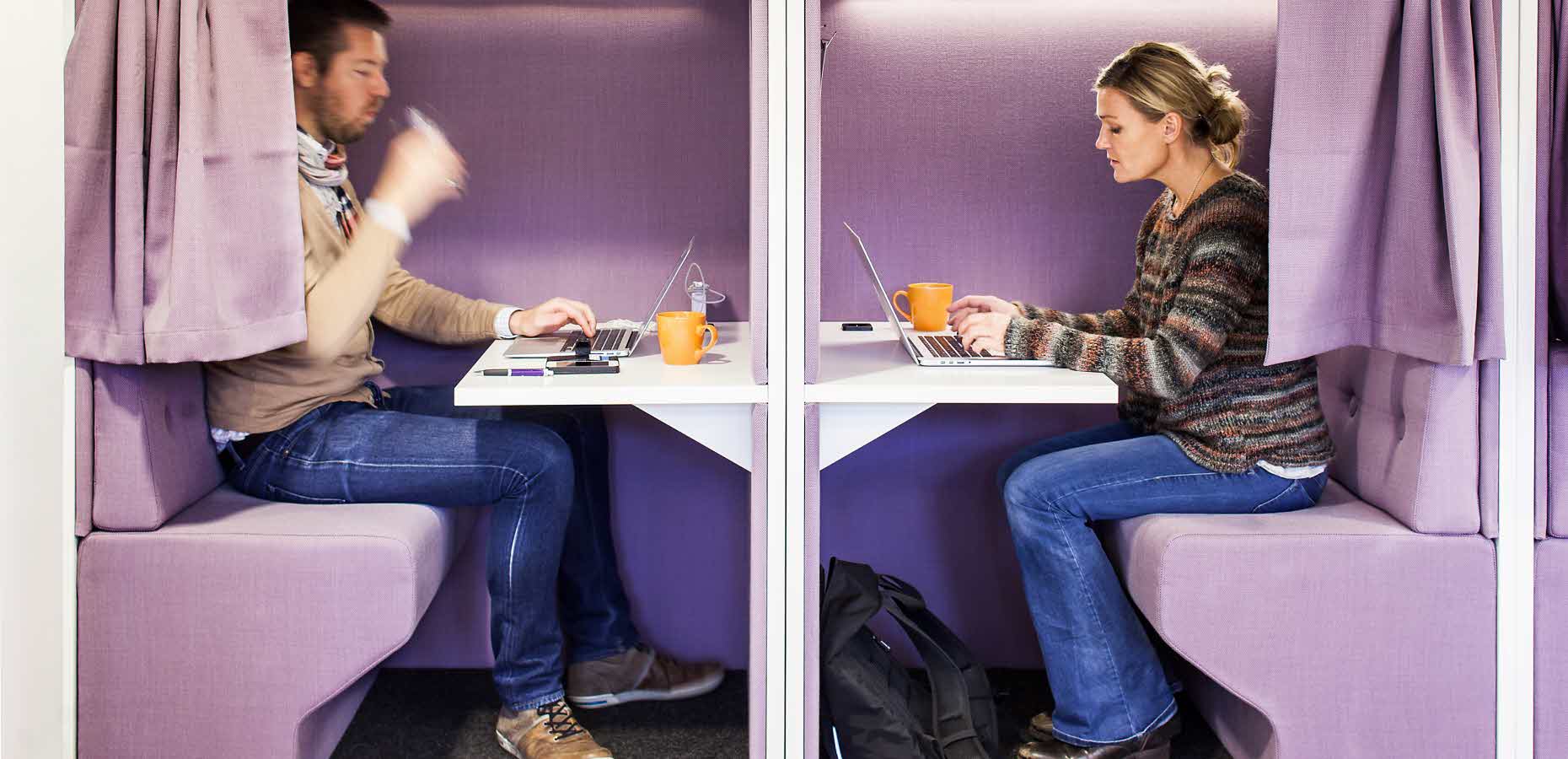Anna-Lena Carlstedt is working on future offices, trends and development of attractive workplaces, and here, she talks briefly about some of the crucial issues that are frequently discussed.
The offices and trends of the future


ACTIVITY BASED

MOBILE

SUSTAINABLE
Tomorrow’s workplace – which trends can we expect?
Smart mobile technology that means we’re no longer bound to one place – we’re finding new and more efficient ways of working.
Agile organisations – companies are currently desperately seeking ways to keep both their organisations and employees mobile and alert.
Sustainable development – employers being required to create sustainable workplaces – is being demanded both by employees and in the UN Sustainable Development Goals.
Understanding new generations – young employees have new ways of viewing work, understanding this gives an insight into how workplaces will look in the future.
Activity-based – what does that mean exactly?
Previously we’ve planned our offices with three typical environments: the individual workstation, the conference room and the kitchenette. We can, however, confirm that most offices today are not used in an optimum way.
More than 50 percent of all office workstations are empty, which means that offices are often perceived as deserted. An activity-based office means that you design the workplace for several different activities, a few examples being talking on the phone, sitting in meetings, doing work requiring concentration or working in projects.
When designing an office, you place greater emphasis on knowledge and skills transfer than before. An activity-based office has no fixed workspaces but does have many bases, which means that you sit in the group you belong to.
Digitisation and technological development – how does this affect us?
Now that we can work anywhere, do we actually need an office?
Current technology makes it possible to work everywhere. However, people have a need to share experiences with colleagues and feel a sense of community. It’s important to create a pleasant office; you’re supposed to wake up in the morning and feel that you want to go into work – that’s when an office is a success. I don’t think offices will disappear - we collaborate more and more today and need to build a brand and corporate culture. An attractive office is also important in terms of being able to recruit and maintain the best employees.
Why the focus on employee health?
Good health and well-being is a condition for employee creativity and productivity and thus a key indicator of a company’s success. Sickness absence means greater costs for both companies and society in general and entails suffering for the individual.
A good work environment and a high level of involvement in the company helps ensure good health among employees. Today there are also various health certifications for offices that take into consideration factors such as air, noise, light, water, movement and mental state. According to figures from the Swedish Work Environment Authority, an employee with problems in their workplace performs on average 38 percent poorer than if they worked in a pleasant environment.
Do you have a question?
Business Development
+46 46 70 399 87 42
Anna-Lena.Carlstedt@fabege.se
Contact card




